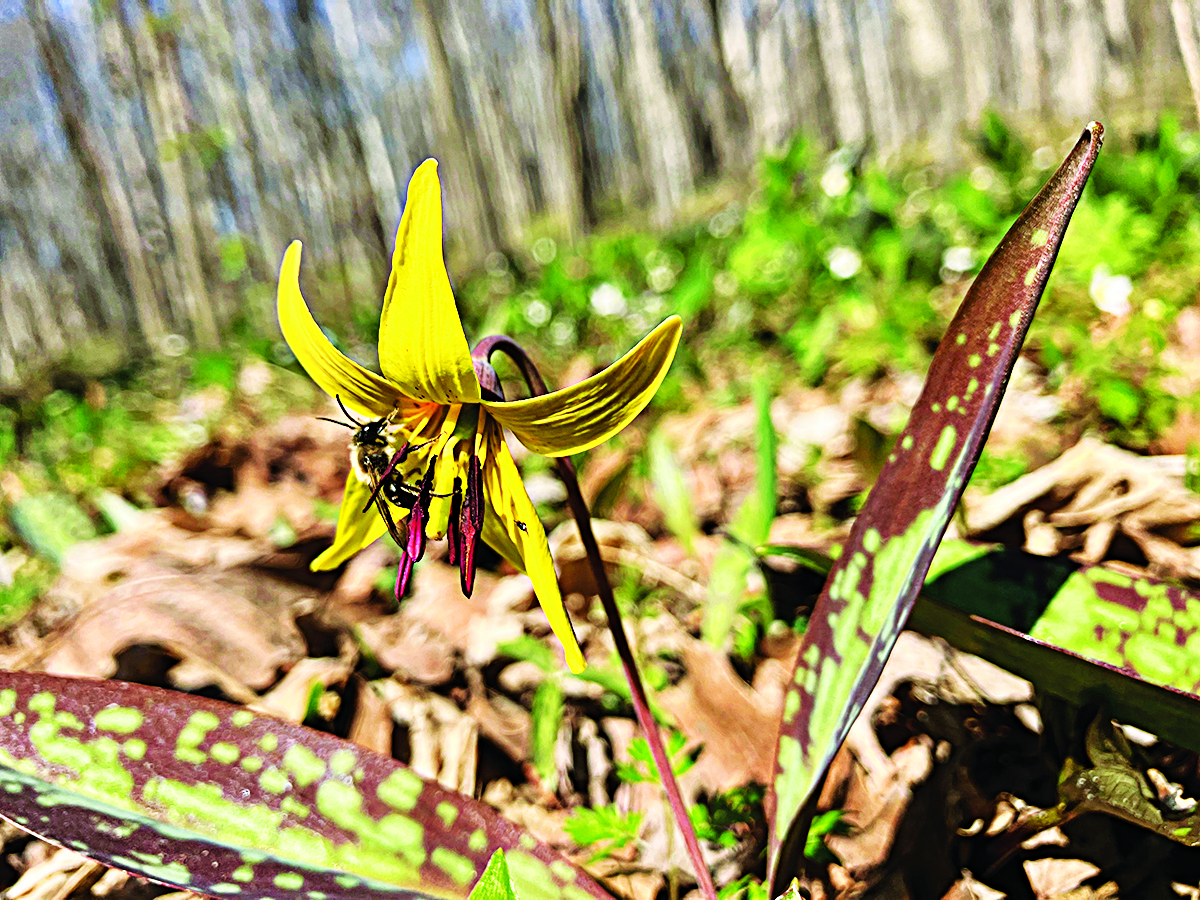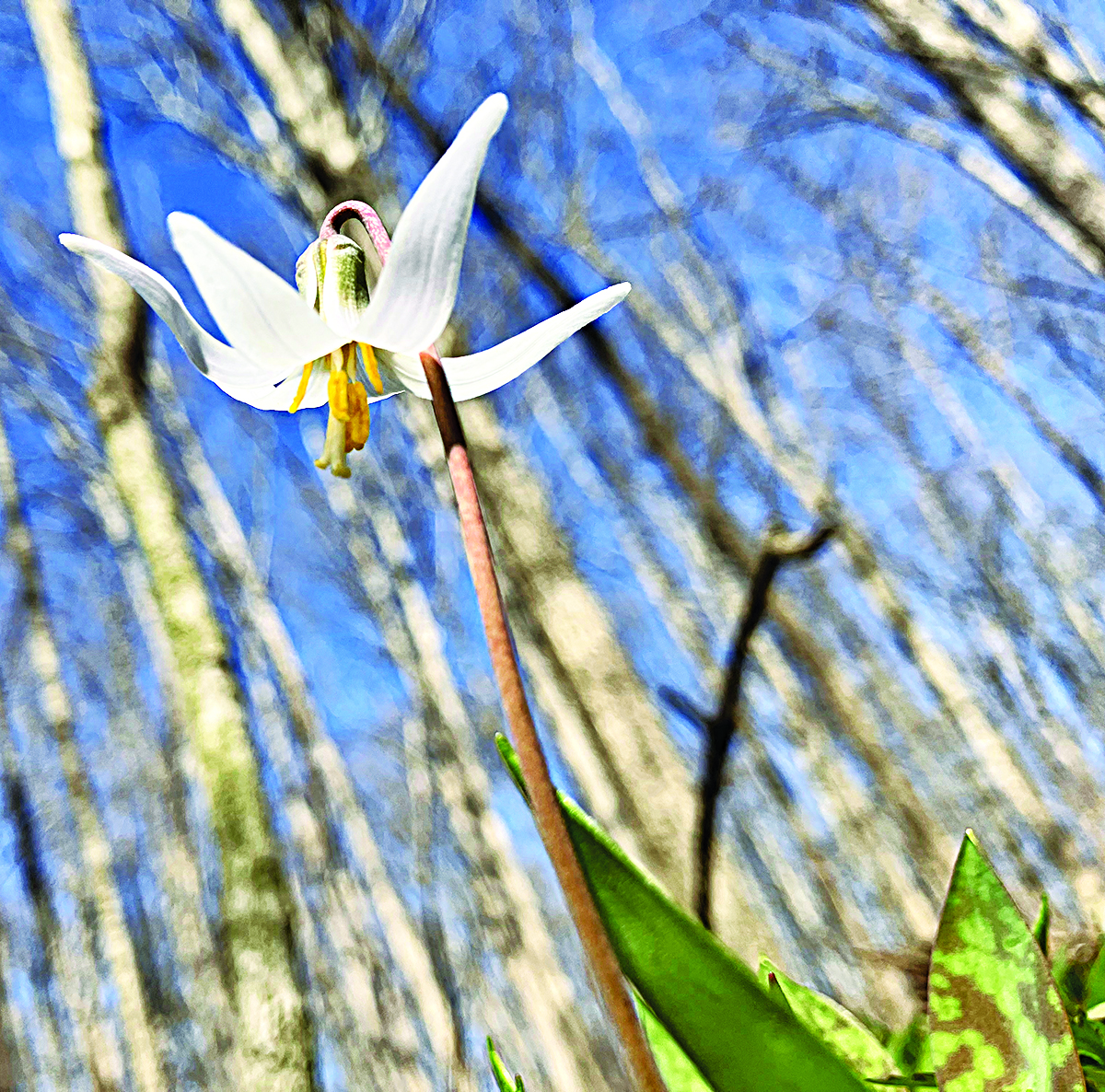A friend asked me, “How old do Trout Lilies have to be in order to bloom?” Apparently he has had some growing in his wildflower garden for several years. The leaves come up each year, and the number of plants has increased, but they have never bloomed. This actually happens in the woodlands of Illinois. There can be huge areas of vegetative leaves growing in April, but very few flowers.
There are three species of Trout Lily that are native to Illinois. Two species have white flowers, and one species has yellow flowers. The Prairie Trout Lily (Erythronium mesochoreum) is a white flowering species that is the rarest of our native trout lilies. It is found in only a handful of counties and grows in dry prairies. It seldom forms colonies, and is smaller than its brethren and has very narrow leaves.
The White Trout Lily (Erythronium albidum) looks similar, but grows in rich woodlands. It is the most common of our Trout Lily species and can be found in every county in Illinois. They can form large colonies in rich, undisturbed forests. Plants send out one or two leaves with a mottled green and brown pattern. These leaves are reminiscent of the mottled color of a trout, hence the name “trout” lily. On mature plants, a single flower stalk 4-6 inches tall emerges soon after the leaves fully open terminated with a single blossom that bends gracefully over. Once the flowers open, the petals curve back to reveal striking yellow stamens. These white petals look like the canine teeth of a dog. Another common name of this plant is “dog-toothed violet.”

A Yellow Trout Lily with Trout-lily Mining Bee at Moraine View State Recreational Area, McLean County.
MIKE MILLER
The last of our native trout Lillies is the Yellow Trout Lily. It is found in Southern and Eastern Illinois. While it isn’t naturally found in our Peoria County woodlands, a few gardeners have successfully propagated it. A good population can be found in Southern McLean County at Moraine View State Recreation Area. The rich woodlands below the Dawson Lake dam are worth a visit to explore a variety of native wildflowers. Here you can find both the White and Yellow Trout Lilies growing in abundance from Mid-April through early May. The flowers of both species are visited by a variety of native bees. They are some of the earliest wildflowers to bloom and are frequently visited by emerging queen bumblebees. There is also a specialist bee known as the Trout-lily Mining Bee (Andrena erythronii) that makes it’s living gathering pollen and nectar from blooming trout lilies. When I visited Moraine View in mid-April, the woodlands were abuzz and the flowers were loaded with several species of bees. It was a sight that is seldom seen here in Illinois and reminded me of the insect diversity found in Smokey Mountain National Park.
You will definitely see more leaves than flowers of Trout Lilies. It makes you wonder if they ever all bloom. It turns out that they likely do not all bloom in any given season. In fact, it can take decades before any species of trout Lily grows from a seed to bloom. They can spread through underground roots, creating clonal colonies. Since these colonies are all genetically identical, the plants don’t expend a lot of energy producing flowers. Genetic diversity happens when pollen from one colony travels to another colony via insects. This is why bees are so important to plants.
Once the flowers have finished blooming, and seeds are formed, Trout Lilies employ a trick to entice insects to assist in moving the seeds away from the colony. The seeds are coated with a waxy covering known as an elaisome. The ants carry the seed to their colony, and feed the protein rich elaisome directly to their ant larvae. They then cast the seed away, often planting it in rich woodland soil in the process.
The natural world can be a very complex and interrelated system. The answer to how old a plant needs to be in order to bloom kind of evades the issue. The real answer is that a plant needs to be just old enough in order to ensure the survival of the species over millennia. There are no simple answers. It’s the ability of us as a species to ask questions that is important.



Recent Comments